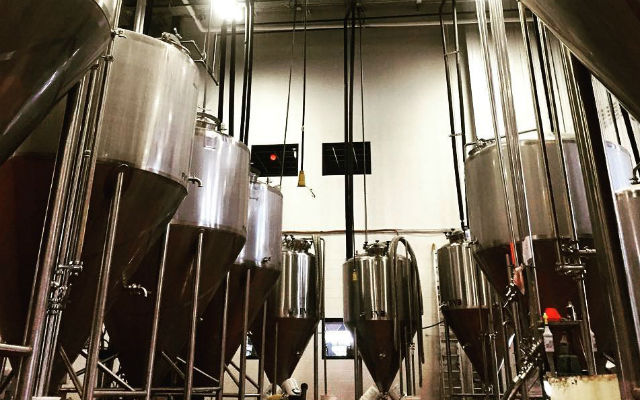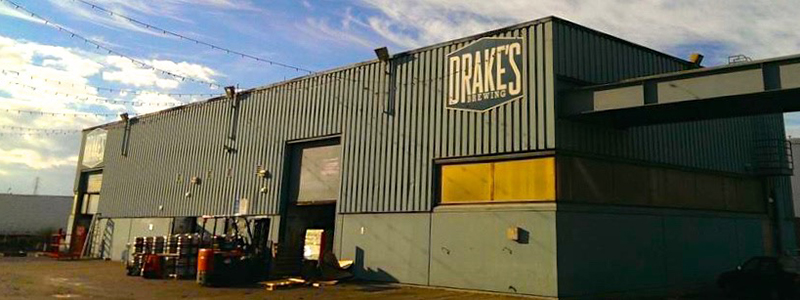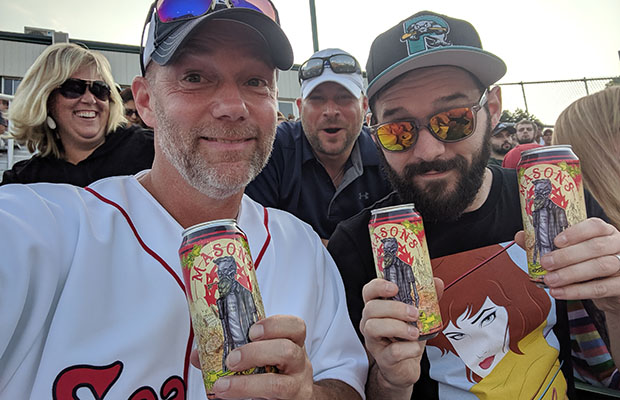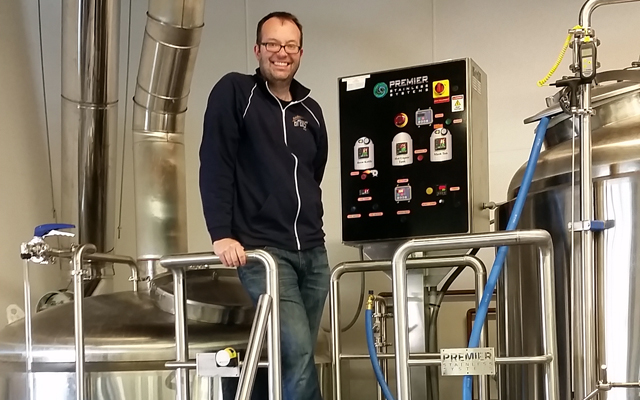
Brewer Magazine gathered input from breweries from across the country to share input on what type of water these breweries have and how they adjust it to their liking.
Drake’s Brewing‘s Lab Manager Michael Burgess and Brewmaster John Gillooly said they are incredibly lucky to get slightly hard water for most of the year, with low concentrations of chloride and sulfate pretty much year round.
“The low concentrations give us free reign to brew any style of beer we want,” they said. “Whenever we want to adjust the water profile for a new beer or if we are modifying an existing recipe, we first figure out what we want the water to contribute. In our case, most of our beers have lots of hop-driven flavors, so we start with a desired sulfate level above 50 ppm. Then if a beer is a big hop bomb, we increase the sulfate level so the hops are accentuated. If the beer in question is supposed to have lots of body, like our hazy ones, we adjust the chloride concentration so the malt becomes more noticeable. Once we have concentration levels in mind, we calculate how much of each salt we would need to add to get the desired level. We also design all of our recipes to be robust enough that a slight fluctuation in water concentration will not noticeably change our beers.”
Also while not a test per say, the incoming water and hot liquor tank water are tasted daily at Drake’s.
“This allows us to quickly screen for any off flavors or off colors that might transfer to the beer and make a less than desirable product,” they said.
21st Amendment Brewery’s Quality Supervisor, Jocelyn Havel, said the same is done to ensure a good start.
“We take samples before and after our UV sterilization to plate onto nutrient plates to ensure that our water is sterile,” she explained, adding they test for chloride bi-weekly to ensure that the carbon filter is functioning. They also send out water samples to an external lab to test for hardness, alkalinity and various ion concentrations.
“We use this information to adjust water profiles for each of our brands,” Havel said. “Depending on the beer we are brewing, we have a target ion/salt concentration to achieve characteristics of that style. We typically adjust for pH, chlorine, calcium, sulfate and other various ions.”
Tom Davis, the owner of Thomas Creek says that being in Greenville, South Carolina gives the brewery some great water to start from.
“It’s much like a clean slate with just enough mineral content to make a wonderful base,” he said. “We have Ward Labs run a simple brew water test every year to make sure there have been no major changes and there have not been in 20 years.”
Thomas Creek does add MgSO4, CaSo4 and CaCl2 to the water in many varying amounts because the water is very soft and needs calcium to harden it up along with having those three salts added can emulate most water profiles.
“This give us the ability to make many different styles of beer as we can change the water to meet the style parameters,” he explained.
In Madison Wisconsin, Ale Asylum‘s Quality Control Manager Joe Walts said the brewery tests for calcium, magnesium and alkalinity.
“We are pleased to report that our test results are very close to the values in our municipal water reports,” Walts said. “However, the city supplies our water from three wells and the fraction from each well varies seasonally, so it’s important that we have frequently-updated data from our own tests.
“We treat our water with lactic acid to neutralize carbonates and use the same baseline water for all of our beers, but each recipe has its own mash pH adjustment based on the results of in-house malt acidity tests that we began performing in late 2015.”
When Drake’s brought its 60-bbl brewhouse online they had the opportunity to take a look at all of their recipes again.
“We were adding Calcium Chloride, Calcium Sulfate, and in some cases Sodium Bicarbonate in varying amounts to everything,” Gillooly and Burgess explained. “As recipes were scaled up, the salt amounts were changed frequently, among other things, and our beers were of variable quality.
“Having done experiments to show that the salt concentrations could affect the flavor of the beer, we used Water: A Comprehensive Guide for Brewers by John J. Palmer and Colin Kaminski for style guidelines to set specs for all of our beers, at levels where we were happy with the flavor contribution. From there is was easy enough to calculate what additions we would need to get the salts concentrations to the desired level in any size batch.”
Along with testing their water for taste and pH regularly, Todd Ford at NoDa said they also send their water off quarterly for analysis for tests that their lab is not prepared to do at this time.
“We have “skinny water” as I call it,” Ford said, “low in Calcium but also low in most other minerals and salts. We augment our hoppy styles with more calcium and more sulfate while non-hoppy beers get the calcium without the sulfate.
“We focus a lot more on our base water than we did six years ago and I think it shows in our beer’s flavor.”
Drake’s is still striving to improve their water quality and they are working on adding an RO system. When it’s finally brought online there are plans to blend the RO water with the incoming city water.
“This will give us complete control over our brewing water,” they said. “When summer comes and our water shifts to a reservoir with higher alkalinity or a higher sulfate level, we will be able to increase the amount of RO water to the blend and keep our water parameters identical throughout the year.”
Alkalinity is the only vital test Drake’s does regularly to ensure quality. Being located in the Bay Area, they get most of our water from two sources: local reservoirs and the Mokelumne watershed.
“The biggest difference is the alkalinity. Mokelumne is in the 20 ppm range and local water is in the 100 ppm range,” the duo wrote to Brewer. “Our local water district, East Bay Municipal Utility District (EBMUD), is also kind enough to send weekly water reports and let [us] know when they change water plants that might cause spikes in any parameter. During the summer, our alkalinity can fluctuate fairly drastically from one day to the next.
“Testing it daily allows us to assess how much acid we need to add to adjust our mash pHs on a daily basis, so we can maintain the ideal mash pH. If something seems questionable or we get a heads-up from EBMUD, we can also test for sulfate, hardness, and chloride to adjust our salt additions to stay in the desired range for all our styles.”
Read more about water in the May/June issue of Brewer Magazine.






1 Trackback / Pingback